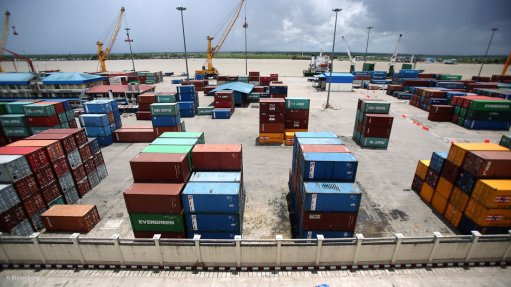
South Africa posted another sizeable trade deficit of R13.03-billion in April following the prior month’s upwardly revised deficit of R11.9-billion, data released by the South African Revenue Service (Sars) on Friday has shown.
BNP Paribas Cadiz Securities economist Jeffrey Schultz pointed out that the deficit had been expected to narrow to R10.7-billion.
Sars reported a 2.6% month-on-month fall in exports to R77.42-billion, while imports fell by 1% month-on-month to R90.45-billion.
“The key contributors to the monthly fall in exports came from an 11.2% month-on-month fall in vehicle and transport equipment; a 5% fall in base metals and a 9.9% contraction in chemical product exports. Interestingly, mineral product exports actually climbed 5.7% in April while exports of precious and semiprecious stones managed to hold up,” Schultz noted.
He said BNP viewed the resilience in mineral exports as evidence that stockpiles built up by local mining companies had helped cushion the blow of the now 18-week-long strike in the platinum-group metals (PGMs) sector.
“Anecdotal evidence that these inventories started to run low during May, however, suggests that more pain for PGMs and broader precious metals and related exports lie up ahead,” Schultz noted.
Investec economist Annabel Bishop, in turn, attributed the increase in minerals exports to mineral fuels and products having picked up after March’s constraints, following high diesel use to fire electricity generators to meet peaking demand on the national grid.
She added that the rand’s weakness had not assisted in boosting export demand overall, as it had been overshadowed by the impact of work stoppages, owing to incidences of inconsistent electricity supply and labour strikes, and weakening demand from China.
“Higher production costs in South Africa, with producer price index inflation coming out at 8.8% year-on-year for April, are also negatively affecting the international competiveness of South African products,” Bishop pointed out.
Meanwhile, detailed import figures revealed that the main contributors to the fall in imports in April came from mineral products, down 13.9% month-on-month, and vegetable products, which dropped by 29.5% month-on-month. Chemical products, machinery and electronics and plastics and rubber, however, registered month-on-month increases of 20.1%, 2.5% and 13.1% respectively.
Bishop said the lower mineral imports level was owing to lower oil and petroleum product demand as the electricity base-load crisis eased and government did not have to rely as heavily on diesel-fired electricity generators for peak load periods.
Further, the drop in imports of vegetable products was evidence of the slowdown in consumer spending persisting.
On a year-on-year basis, South African exports were currently up 2.5% in April, while imports were over 7% higher.
The cumulative deficit for 2014 was R40.96-billion compared with R30.66-billion in 2013.
“With the main impact of the ongoing PGM strikes likely to show up much more prominently over the coming months, this paints a disturbing picture for South Africa’s external accounts and is likely to keep the rand on the back foot in the near to medium term,” Schultz said.